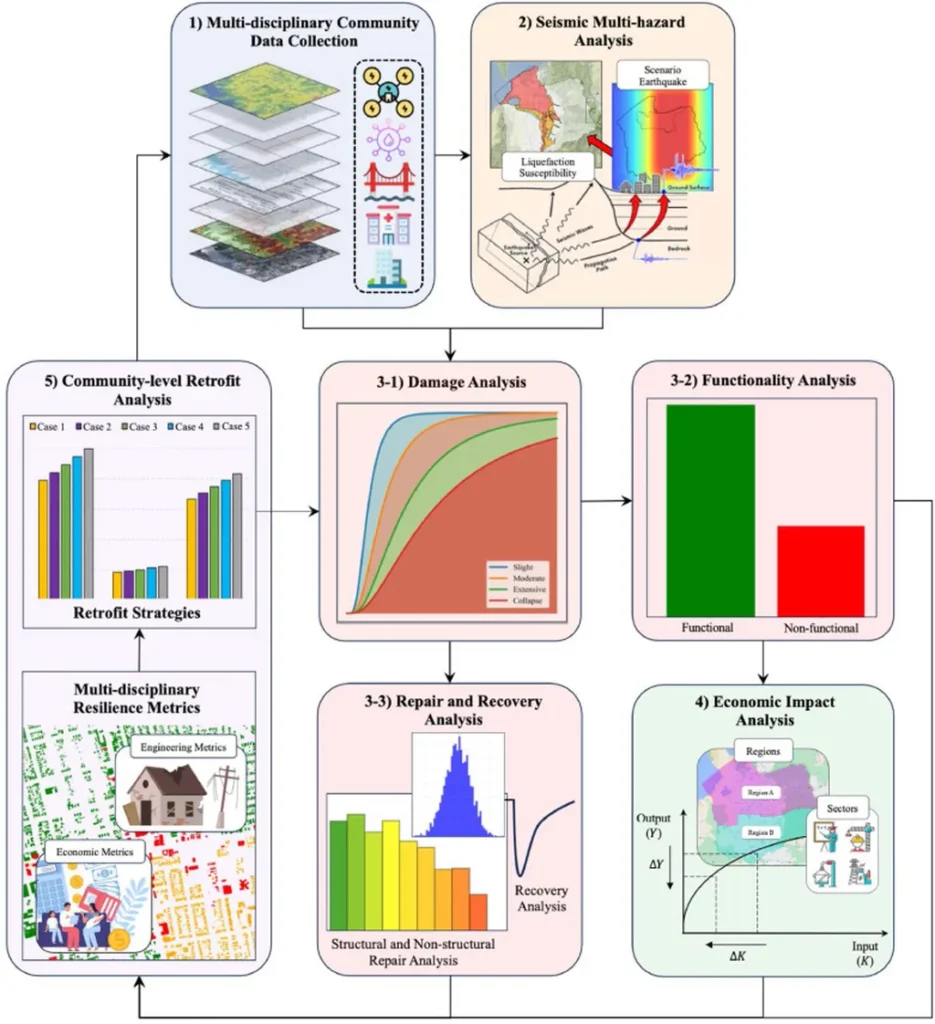In the ever-evolving world of structural engineering, a groundbreaking study has emerged that could redefine the way we approach seismic resilience and post-earthquake recovery. Published in the esteemed journal *Jianzhu Gangjiegou Jinzhan* (translated to *Advances in Structural Engineering*), the research titled “Research on Seismic Performance of Self-Centering Buckling-Restrained Corrugated Steel Irregular Column-Beam Joints” introduces a novel node design that promises to enhance the earthquake resistance and post-disaster functionality of buildings.
The lead author, Zhang Ailin, whose affiliation is not specified, has developed a self-centering buckling-restrained node for corrugated steel irregular columns and beams. This innovation is poised to meet the growing demand for structures that can not only withstand seismic forces but also recover functionality quickly after an earthquake.
The study employs finite element analysis using ABAQUS software to investigate the impact of key structural parameters on the seismic performance of these nodes. The findings are compelling: the new node design exhibits semi-rigid connection properties, excellent energy dissipation capabilities, and superior ductility. “The node effectively realizes the external migration of plastic hinges, ensuring structural integrity and functionality post-earthquake,” Zhang explains.
One of the critical insights from the research is the effect of reducing the number of flange bolts. This modification leads to a significant decrease in the node’s yield and ultimate load capacities, by 34.3% and 39.3% respectively. Additionally, it shifts the primary energy dissipation mechanism to the friction slip of the flange cover plate, reducing cumulative energy dissipation by 38.2%.
The study also highlights the importance of bolt hole shapes and flange cover plate thickness. Suspended beam flanges with long round bolt holes enhance the node’s energy dissipation capacity. Optimal flange cover plate thickness is recommended to be between 1/20 to 1/16 of the beam height, with a dog bone weakening rate of 0.6 to 0.8. These parameters ensure sufficient load-bearing capacity and excellent energy dissipation performance.
Zhang’s research also proposes a simplified calculation formula for the node’s yield load, which offers high precision and practical value for node design. “This formula provides a reliable tool for engineers to design nodes that meet specific seismic performance requirements,” Zhang adds.
The implications of this research are far-reaching, particularly for the energy sector, where the integrity and functionality of structures are paramount. Buildings housing critical energy infrastructure, such as power plants and refineries, can benefit significantly from this innovative node design. Enhanced seismic resistance and post-disaster recovery capabilities can minimize downtime and ensure the continuous operation of essential energy facilities.
As the construction industry continues to evolve, the adoption of such advanced technologies will be crucial in building resilient and sustainable structures. Zhang’s research represents a significant step forward in this direction, offering a blueprint for future developments in structural engineering. The study not only advances our understanding of seismic performance but also paves the way for more robust and recoverable building designs.

